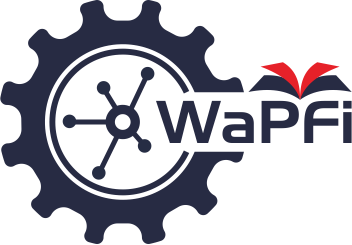Unveiling trends in physics learning with robotics from 2014 to 2024: A bibliometric analysis
Abstract
This study examines 682 articles on physics learning with robotics sourced from scopus, published from 2014 to 2024. The main objective of this study is to uncover the application of robotics in physics learning through bibliometric analysis using R software. This analysis aims to identify, analyze, and present recent trends relevant to the role of robotics in physics learning. The results show that the dominant topics in this field include robotics, deep learning, and reinforcement learning. The number of publications increases significantly, peaking in 2023 with 122 documents, before declining to 112 documents in 2024. The United States is the country with the most authors and contributors with 81 publications, making it a major research center in physics learning with robotics. In addition, the most affiliated institution is the University of California with 48 articles, and the journal “Proceedings - IEEE International Conference on Robotics and Automation” is the most relevant source with 44 publications. Increased international collaboration and cross-disciplinary research is expected to continue to spur innovation in this field. In the future, further research is needed to optimize the use of robotics, especially in improving students' computational ability in physics learning.
Downloads
References
Abulibdeh, A., Zaidan, E., & Abulibdeh, R. (2024). Navigating the confluence of artificial intelligence and education for sustainable development in the era of industry 4.0: Challenges, opportunities, and ethical dimensions. Journal of Cleaner Production, 140527.
Anwar, S., Bascou, N. A., Menekse, M., & Kardgar, A. (2019). A systematic review of studies on educational robotics. Journal of Pre-College Engineering Education Research (J-PEER), 9(2), 2.
Arifin, Z., Sukarmin, & Sarwanto. (2021). Research and Trend on STEM Education in Indonesia : A Systematic Review Based on Bibliometric Mapping ( 2000-2020 ). 58(5), 3235–3243.
Atman Uslu, N., Yavuz, G. Ö., & Koçak Usluel, Y. (2023). A systematic review study on educational robotics and robots. Interactive Learning Environments, 31(9), 5874-5898.
Baharin, N., Kamarudin, N., & Manaf, U. K. A. (2018). Integrating STEM Education Approach in Enhancing Higher Order Thinking Skills. International Journal of Academic Research in Business and Social Sciences, 8(7), 810–821. https://doi.org /10.6 0 07/ija rbss/v 8 -i7/4 4 21
Belpaeme, T., Kennedy, J., Ramachandran, A., Scassellati, B., & Tanaka, F. (2018). Social robots for education: A review. Science Robotics, 3(21), eaat5954. doi:10.1126/scirobotics.aat5954
Broman, K. W., Gatti, D. M., Simecek, P., Furlotte, N. A., Prins, P., Sen, Ś., Yandell, B. S., & Churchill, G. A. (2019). R/qtl2: Software for mapping quantitative trait loci with high-dimensional data and multiparent populations. Genetics, 211(2), 495–502. https://doi.org/10.1534/genetics.118.301595
Brunke, L., Greeff, M., Hall, A. W., Yuan, Z., Zhou, S., Panerati, J., & Schoellig, A. P. (2024). Safe Learning in Robotics: From Learning-Based Control to Safe Reinforcement Learning. Robotics, and Autonomous Systems Downloaded from Www.Annualreviews.Org. Guest. https://doi.org/10.1146/annurev-control-042920
Carney, M. (2011). Afiliasi, kinerja, konteks, dan strategi kelompok bisnis: Sebuah meta-analisis. Acad. Manag. J. 54, 437-460.
Castelvecchi, D. (2016). Can we open the black box of AI? Nature, 538(7623), 20–23. doi:10.1038/538020a
Chazan, B. (2021). Principles and pedagogies in Jewish education. In Principles and Pedagogies in Jewish Education. Springer. https://doi.org/10.1007/978-3-030-83925-3
Collins, J., Chand, S., Vanderkop, A., & Howard, D. (2021). A review of physics simulators for robotic applications. IEEE Access, 9, 51416-51431.
Darmawansah, D., Hwang, G. J., Chen, M. R. A., & Liang, J. C. (2023). Trends and research foci of robotics-based STEM education: a systematic review from diverse angles based on the technology-based learning model. In International Journal of STEM Education (Vol. 10, Issue 1). Springer Science and Business Media Deutschland GmbH. https://doi.org/10.1186/s40594-023-00400-3
Dervis, H. (2019). Bibliometric analysis using bibliometrix an R package. Journal of Scientometric Research, 8(3), 156–160. https://doi.org/10.5530/JSCIRES.8.3.32
Donnermann, M., Lein, M., Messingschlager, T., Riedmann, A., Schaper, P., Steinhaeusser, S., & Lugrin, B. (2021). Social robots and gamification for technology supported learning: An empirical study on engagement and motivation. Computers in Human Behavior, 121, 106792.
Farwati, R., Metafisika, K., Sari, I., Sitinjak, D. S., Solikha, D. F., & Solfarina, S. (2021). STEM Education Implementation in Indonesia: A Scoping Review. International Journal of STEM Education for Sustainability, 1(1), 11–32. https://doi.org/10.53889/ijses.v1i1.2
Ferrarelli, P., & Iocchi, L. (2021). Learning Newtonian Physics through Programming Robot Experiments. Technology, Knowledge and Learning, 26(4), 789–824. https://doi.org/10.1007/s10758-021-09508-3
González‐salamanca, J. C., Agudelo, O. L., & Salinas, J. (2020). Key competences, education for sustainable development and strategies for the development of 21st century skills. A systematic literature review. Sustainability (Switzerland), 12(24), 1–17. https://doi.org/10.3390/su122410366
Kucuk, S., & Sisman, B. (2017). Behavioral patterns of elementary students and their reflections on inquirybased robotics programming. Computers & Education, 144, 103693.
Li, J., Antonenko, P. D., & Wang, J. (2019). Trends and issues in multimedia learning research in 1996–2016: A bibliometric analysis. Educational Research Review, 28, 100282.
Li, J., Goerlandt, F., & Reniers, G. (2021). An overview of scientometric mapping for the safety science community: Methods, tools, and framework. Safety Science, 134, 105093. doi:10.1016/j.ssci.2020.105093
Mahler, J., Matl, M., Satish, V., Danielczuk, M., DeRose, B., McKinley, S., & Goldberg, K. (2019). Learning ambidextrous robot grasping policies. Science Robotics, 4(26), eaau4984. doi:10.1126/scirobotics.aau4984
Melnikov, A. A., Nautrup, H. P., Krenn, M., Dunjko, V., Tiersch, M., Zeilinger, A., & Briegel, H. J. (2018). Active learning machine learns to create new quantum experiments. Proceedings of the National Academy of Sciences of the United States of America, 115(6), 1221–1226. https://doi.org/10.1073/pnas.1714936115
Nakajima, K. (2020). Physical reservoir computing–An introductory perspective. Japanese Journal of Applied Physics. https://doi:10.35848/1347-4065/ab8d4f
Ouyang, F., & Xu, W. (2024). The effects of educational robotics in STEM education: a multilevel meta-analysis. In International Journal of STEM Education (Vol. 11, Issue 1). Springer Science and Business Media Deutschland GmbH. https://doi.org/10.1186/s40594-024-00469-4
Papadakis, S. (2020). Robots and Robotics Kits for Early Childhood and First School Age. International Association of Online Engineering. Retrieved October 14, 2024 from https://www.learntechlib.org/p/218338/.
Passas, I. (2024). Bibliometric analysis: the main steps. Encyclopedia, 4(2).
Peters-burton, E. E., & Stehle, S. M. (2019). Developing student 21 st Century skills in selected exemplary inclusive STEM high schools. International Journal of STEM Education, 1, 1–15.
Potkonjak, V., Gardner, M., Callaghan, V., Mattila, P., Guetl, C., Petrović, V. M., & Jovanović, K. (2016). Virtual laboratories for education in science, technology, and engineering: A review. Computers & Education, 95, 309–327. doi:10.1016/j.compedu.2016.02.002
Pratomo, I. C., & Herlambang, Y. T. (2021). Pentingnya Peran Keluarga dalam Pendidikan Karakter. JPPD: Jurnal Pedagogik Pendidikan Dasar, 8 (1), 7–15.
Prieto-Jiménez, E., et al. (2021). Sustainable development goals and education: A bibliometric mapping analysis. Sustainability, 13(4), 2126.
Ruhyana, I. F., Nasbey, H., & Wibowo, F. C. (2023, December). Bibliometric analysis of STEAM in physics education: exploring scopus database on the last decades (2013-2023). In Prosiding Seminar Nasional Fisika (Vol. 2, No. 1, pp. 145-154).
Tan, J., Zhang, T., Coumans, E., Iscen, A., Bai, Y., Hafner, D., Bohez, S., Vanhoucke, V., Brain, G., & Deepmind, G. (n.d.). Sim-to-Real: Learning Agile Locomotion For Quadruped Robots.
Trevissoi, M. C. (2024). Development of an innovative” Hands on Physics” methodology for teaching Physics at high school level.
Tsivitanidou, O. E., Georgiou, Y., & Ioannou, A. (2021). A Learning experience in inquiry-based physics with immersive virtual reality: Student perceptions and an interaction effect between conceptual gains and attitudinal profiles. Journal of Science Education and Technology, 30(6), 841-861.
Wibowo, F. C., Darman, D. R., Guntara, Y., Nulhakim, L., Prahani, B. K., Kurniawan, B. R., ... & Karlin, K. (2024, May). Unveil creative thinking in the physics education: Bibliometric analysis and literature review. In AIP Conference Proceedings (Vol. 3116, No. 1). AIP Publishing.
Wright, L. G., Onodera, T., Stein, M. M., & et al. (2022). Deep physical neural networks trained with backpropagation. Nature, 601(7893), 549–555. https://doi.org/10.1038/s41586-021-04223-6
Xiang, F., Qin, Y., Mo, K., Xia, Y., Zhu, H., Liu, F., … Su, H. (2020). SAPIEN: A SimulAted Part-Based Interactive ENvironment. 2020 IEEE/CVF Conference on Computer Vision and Pattern Recognition (CVPR). doi:10.1109/cvpr42600.2020.01111
Zhu, Y., Mottaghi, R., Kolve, E., Lim, J. J., Gupta, A., Fei-Fei, L., & Farhadi, A. (2017). Target-driven visual navigation in indoor scenes using deep reinforcement learning. 2017 IEEE International Conference on Robotics and Automation (ICRA). doi:10.1109/icra.2017.7989381
Ziervogel, G., Enqvist, J., Metelerkamp, L., & van Breda, J. (2022). Supporting transformative climate adaptation: community-level capacity building and knowledge co-creation in South Africa. Climate Policy, 22(5), 607-622.






